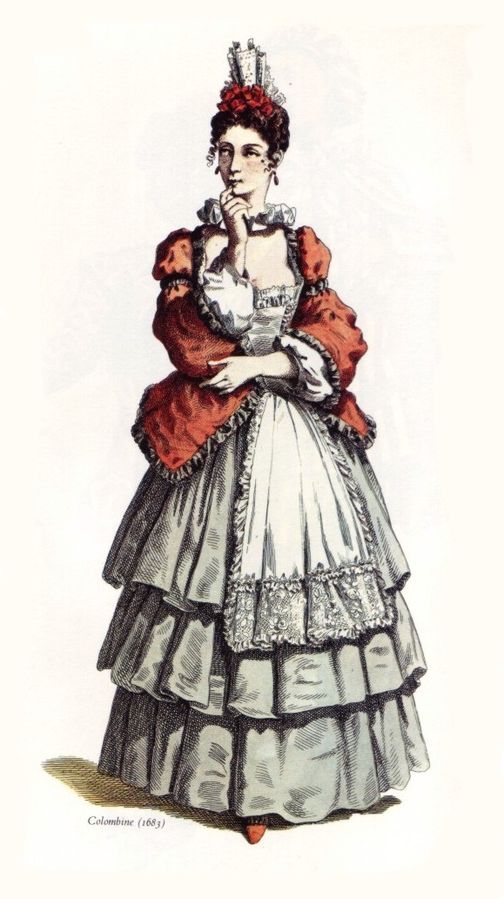My Colombina Posted by Serena on Feb 28, 2019 in Culture
Today is the beginning of the last week of Carnevale (Carnival), which is known as settimana grassa (literally: fat week). This reminds me of my first encounter with traditional Italian Carnival characters.
At that time I was attending la seconda elementare (the second year of primary school) at the Italian school in Benghazi (Libya), where, being a Muslim country, Carnival isn’t part of the local culture, and so I’d never seen this festival.
For the last week of Carnival, la nostra maestra (our teacher ) was off sick, so we had una supplente (a supply teacher). To my great amazement the supply teacher was none other than la professoressa Coda, my elder brothers’ Maths teacher! Not just any old primary school teacher, but una vera professoressa, a real teacher of older children!
N.B. For the first 5 years of scuola elementare (elementary school), children have un maestro/una maestra (a teacher). When they move up to le medie (middle school) they have un professore/una professoressa.
One morning la maestra, or rather, la professoressa, got us to do a piece of work about carnevale. She gave each of us a sheet of A4 paper with the outline of a strange figure drawn on it, and asked us to decorate it as we liked. Having grown up in Benghazi I wasn’t familiar with the Italian maschere di carnevale, so I asked the prof who my figure was. “E’ Colombina!” (It’s Columbine) she answered, a bit surprised. She then explained that Colombina is the most popular female carnival character, and that she represents a servant who is always lying in order to protect her young mistress.
N.B. in the context of carnevale, una maschera is not, as you might think, just a face mask, but the whole character.
I felt very proud to be given the most important female Italian character to work on, but was also quite daunted because professoressa Coda taught my big brothers, therefore I wanted to fare bella figura (make a good impression on her). So I got to work and took a lot of care. I made Colombina’s dress using carta da zucchero azzurra (blue sugar paper), and for her apron I applied two layers of small squares of carta velina di un rosa pallido (tissue paper in a light pink shade). I glued these along the top, leaving them free to create un effetto a balze (a frill effect). Then I carefully coloured in her face and hands with my crayons. I was very pleased with the result!
But my star moment came at the end of the morning when my mother came to pick me up. Professoressa Coda showed my mother my ‘masterpiece’ and complimented me by saying that I was molto brava e precisa (very clever and precise). I was triumphant: ero riuscita a fare bella figura con la professoressa Coda! (I’d succeeded in making a good impression on professor Coda!)
You can find out more about Colombina and other traditional Italian masks in this blog: Maschere di Carnevale

Build vocabulary, practice pronunciation, and more with Transparent Language Online. Available anytime, anywhere, on any device.





Comments:
William C Auge:
Ora chiamero’ il secretario stampa del nostro presidente “Colombina”.
Serena:
@William C Auge Questo è un insulto alla povera Colombina, che è anche molto bella e spiritosa! 🙂
William C Auge:
@Serena Mi dispiace!
Geoff:
@William C Auge Sei troppo gentile Bill, io la chiamerei altre cose che non posso nominare qui!
Donna:
William, mi fa ridere! Dobbiamo ridere per non piangere.
Jane:
Mi piacciono molto tutti i personaggi della Commedia dell’Arte. Qui, nel Regno Unito, abbiamo il derivato ‘Punch and Judy’, ma è una relazione molto povera!